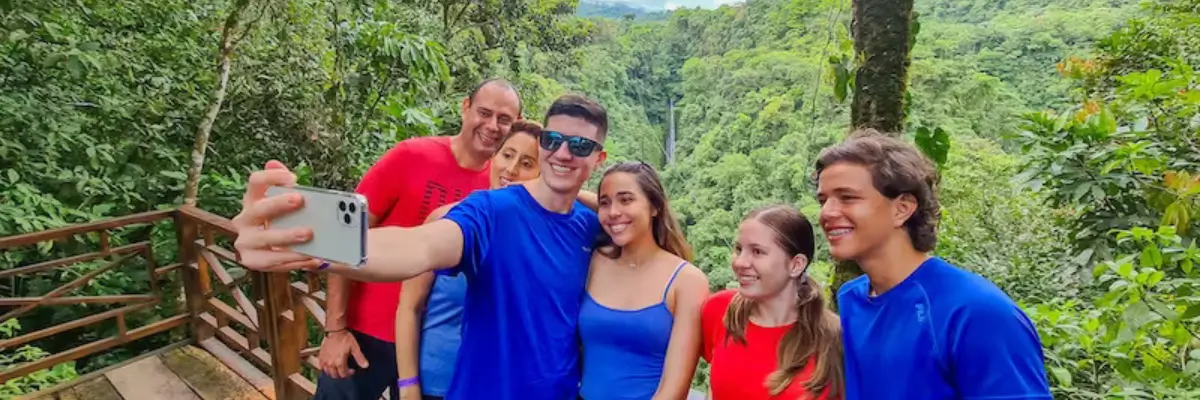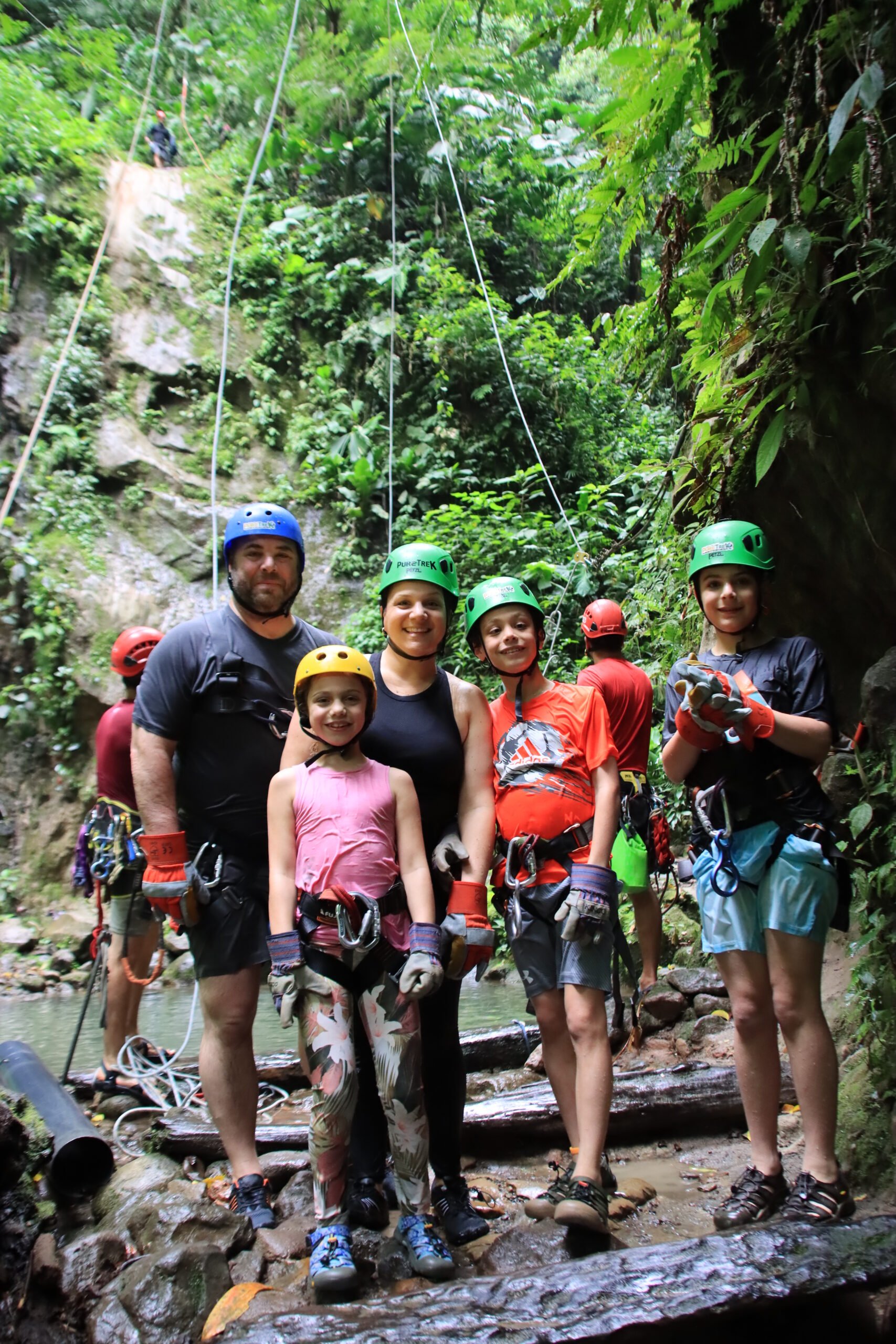If there’s one animal that captivates the hearts of visitors to Costa Rica, it’s the sloth. With their unique features, leisurely lifestyle, and serene presence, sloths in Costa Rica have become emblematic of the country’s pura vida vibe.
Whether you’re a nature enthusiast or just a curious traveler, seeing a sloth in the wild is an unforgettable experience. But where exactly can you spot these elusive creatures?
Let’s dive into the best places and tips for seeing sloths in Costa Rica.

Types of Sloths in Costa Rica
Before we explore the best places to see sloths, it’s essential to know the two species that inhabit Costa Rica:
Hoffmann’s Two-Toed Sloth (Choloepus hoffmanni):
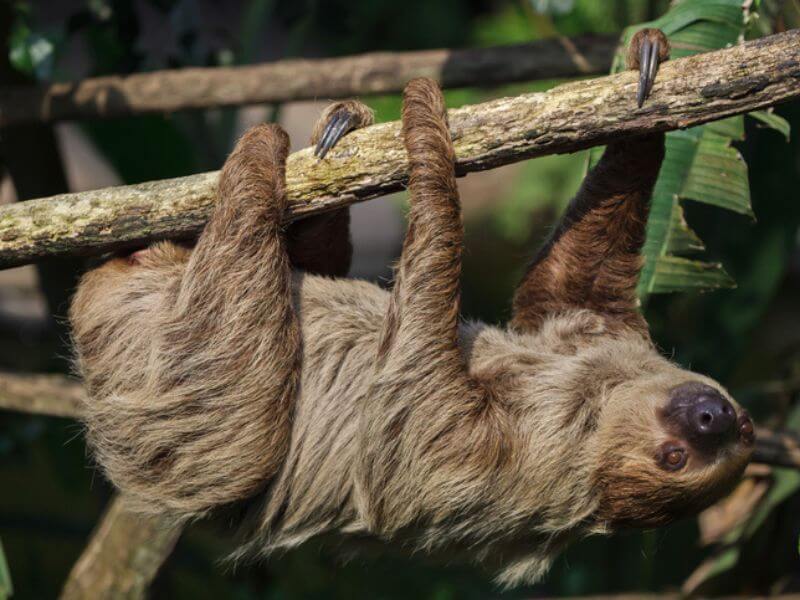
- Activity: Nocturnal
- Characteristics: Longer snout, larger size, and hairless soles on their feet.
- Habitat: Prefers higher elevations and cooler climates.
Brown-throated Sloth (Bradypus variegatus):

- Activity: Active both day and night
- Characteristics: Round head, short nose, and three claws on each limb.
- Habitat: Lower elevations and warmer climates.
- Characteristics: Longer snout, larger size, and hairless soles on their feet.
- Habitat: Prefers higher elevations and cooler climates.
Did you know?
Both sloths have three toes on their hind feet, but their fingers are different, so technically they are three-fingered and two-fingered.
Top Locations to See Sloths in Costa Rica
Manuel Antonio National Park
Manuel Antonio is one of the best places to see sloths in Costa Rica. The park is home to both two-toed and three-toed sloths. The lush rainforest and well-maintained trails make it a prime spot for wildlife viewing.
Tortuguero National Park
Located on the Caribbean coast, Tortuguero is a haven for wildlife. You can spot sloths in the trees along the park’s waterways during a boat tour.
La Fortuna and Arenal Area
While sloths are not typically found within the Arenal Volcano National Park itself, the surrounding rainforests are teeming with them. Consider staying at hotels known for sloth sightings or booking a dedicated sloth tour. For a guided experience, check out the Sloth Territory Guided Tour, which offers a fantastic opportunity to see these gentle creatures up close in their natural habitat.
Monteverde Cloud Forest Reserve
Monteverde’s cooler climate is perfect for two-toed sloths. Although these sloths are more challenging to spot due to their nocturnal nature, guided night walks offer a good chance of seeing them.
Puerto Viejo and Cahuita
On the southern Caribbean coast, the rainforests around Puerto Viejo and Cahuita are excellent for spotting sloths. The Jaguar Rescue Center in Puerto Viejo also offers close encounters with rescued sloths.
What about Guanacaste?
Due to the dry tropical forest of Guanacaste, it is nearly impossible to see sloths due to the fact that they are in tropical rainforests and always have food. This is why it is almost impossible to see sloths there.
Ready to explore Costa Rica’s wildlife? Check out our sample itineraries and start planning your sloth-spotting adventure today!
Wildlife Rescue Centers and Sanctuaries
If you’re keen on guaranteed sloth sightings, visiting a wildlife rescue center or sanctuary is a great option. These centers rehabilitate injured sloths and often provide educational tours.
- Jaguar Rescue Center (Puerto Viejo): A renowned center for rehabilitating sloths and other wildlife.
- Proyecto Asis (La Fortuna): Offers tours and volunteer opportunities focused on sloth conservation.
- Toucan Rescue Ranch (Heredia): Specializes in rescuing and rehabilitating sloths, among other animals.
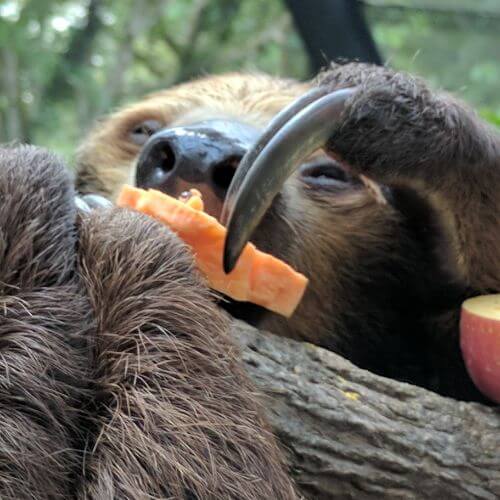
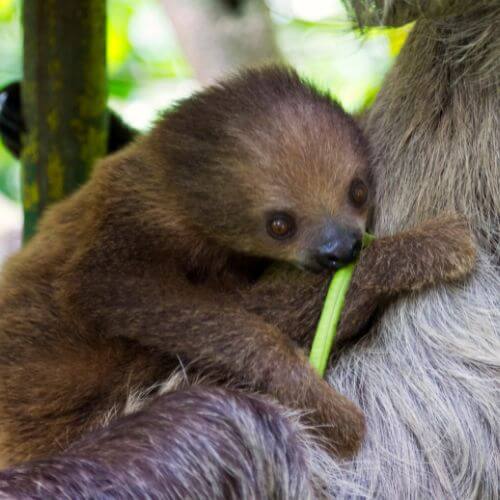

Tips for Spotting Sloths in the Wild
- Hire a Guide: Naturalist guides are adept at spotting sloths camouflaged in the treetops.
- Look Up: Sloths spend most of their lives in trees. Look for them in Guarumo (Cecropia) trees, their favorite.
- Bring Binoculars: Sloths often hide high up in the trees, making binoculars essential for a closer look.
- Be Patient: Sloths move slowly and can be easy to miss. Take your time and enjoy the search.
- Visit During the Right Time: Early morning or late afternoon are typically the best times for wildlife spotting.
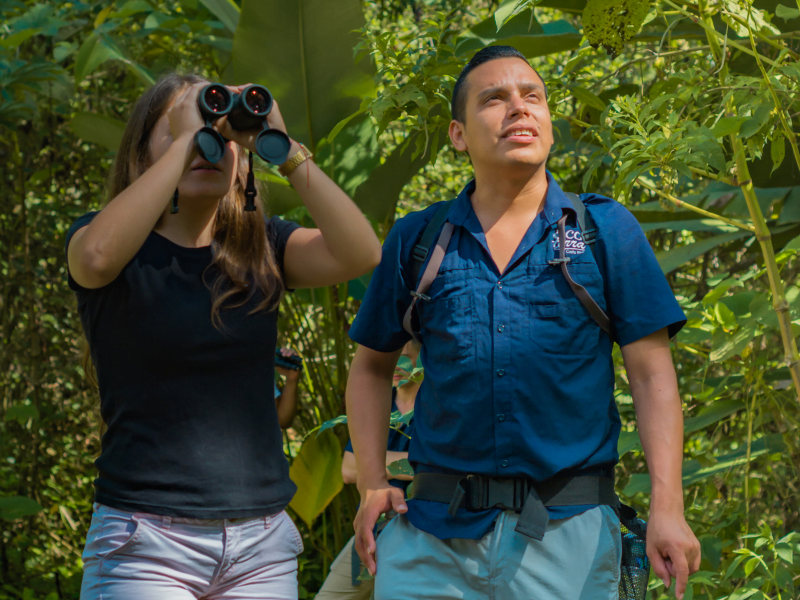
Where Should I Look?
Look up! Sloths are tree-dwellers. Listen closely for leaf rustling and scan the canopy treetops where sloths spend the majority of their time. They only occasionally can be seen on the ground where they go to defecate about once a week because of that slow metabolism. Their weekly trek down to the forest floor is life-threatening and the cause of about half of adult sloth mortalities.

Responsible Sloth Watching
While seeing sloths up close is exciting, it’s crucial to respect their natural habitat. Here are a few do’s and don’ts to keep in mind:
- Do not touch or disturb them. Sloths are sensitive and can get stressed easily.
- Avoid flash photography. It can harm their sensitive eyes.
- Support ethical tours and sanctuaries. Choose places that prioritize the welfare of the animals over tourist interactions.
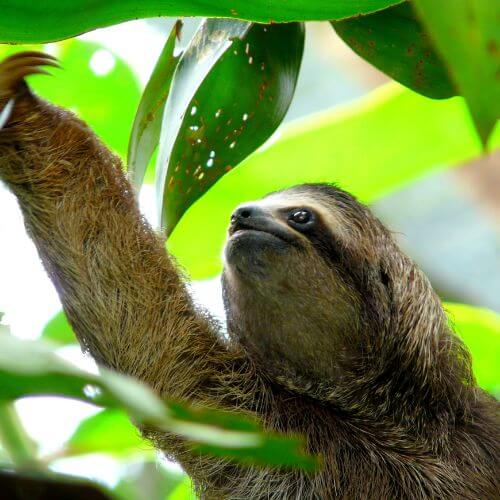
Fascinating Facts About Sloths

Reproduction and Lifespan
Sloths have a relatively slow reproductive rate. Female sloths typically give birth to one offspring per year after a gestation period of about six months.
The baby sloth clings to its mother for the first few months of life, learning essential survival skills. Sloths can live up to 20-30 years in the wild, and even longer in captivity under proper care.
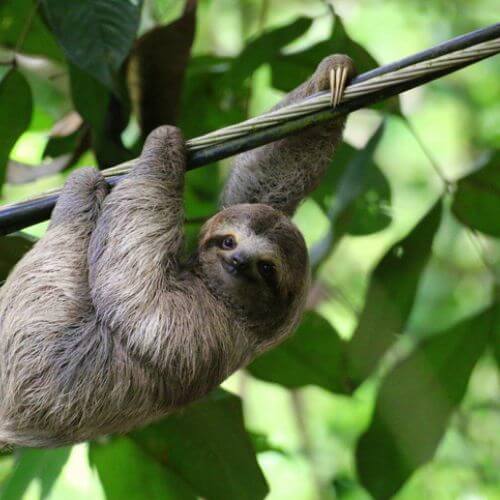
Hanging from Cables
One of the unique and somewhat risky behaviors of sloths is their tendency to hang from power lines and cables. In the wild, sloths navigate through trees using their strong limbs and claws.
Unfortunately, in areas where forests have been fragmented by human development, sloths sometimes use utility lines to cross gaps. This behavior can be dangerous, leading to electrocution or injury. Efforts are being made to install «sloth bridges» in key areas, providing safe passage for these animals.
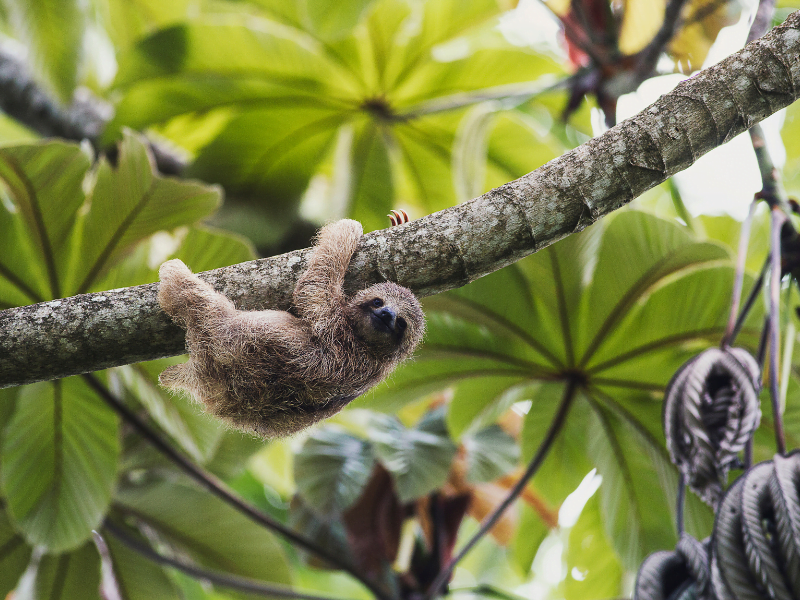
Conservation Status
The two species of sloths found in Costa Rica—Hoffmann’s two-toed sloth and the brown-throated sloth—face different levels of conservation concern.
The brown-throated sloth is classified as «Least Concern» by the IUCN, indicating a stable population. However, Hoffmann’s two-toed sloth is listed as «Near Threatened,» primarily due to habitat destruction and fragmentation.
Conservation efforts are critical in ensuring these gentle creatures continue to thrive in their natural habitats.
More Facts about Sloths
- Sloths are excellent swimmers and can hold their breath for up to 40 minutes underwater.
- They descend from trees once a week to defecate.
- Despite their slow movement, sloths can be surprisingly quick in water.

Summary
Seeing sloths in Costa Rica is a magical experience that connects you with the country’s rich biodiversity. You can ensure a memorable and respectful sloth-spotting adventure by visiting the right places, hiring knowledgeable guides, and practicing responsible tourism. Happy wildlife watching!


